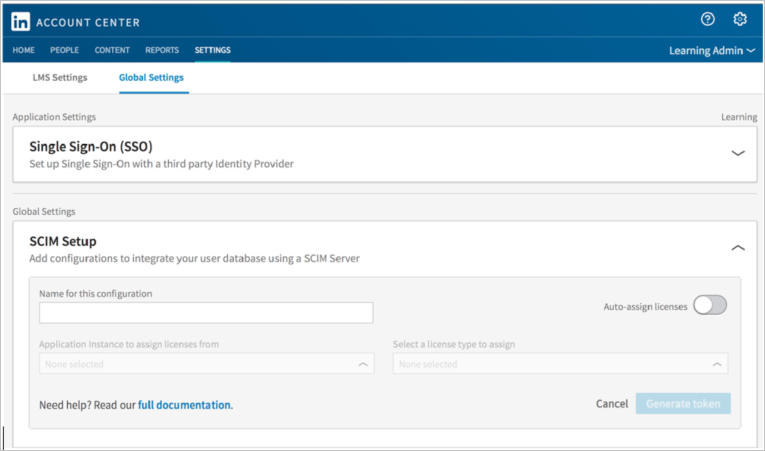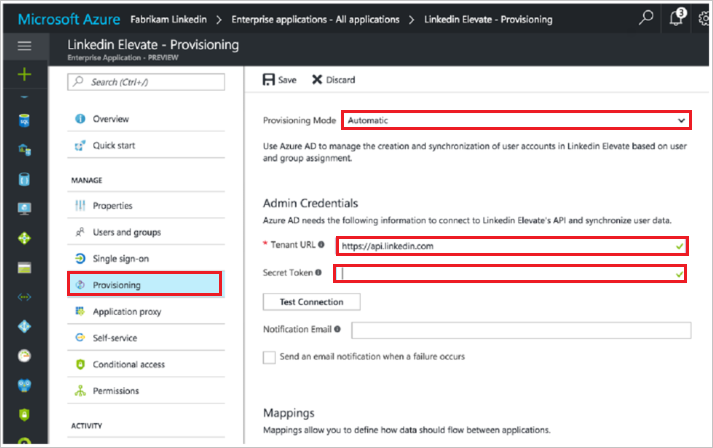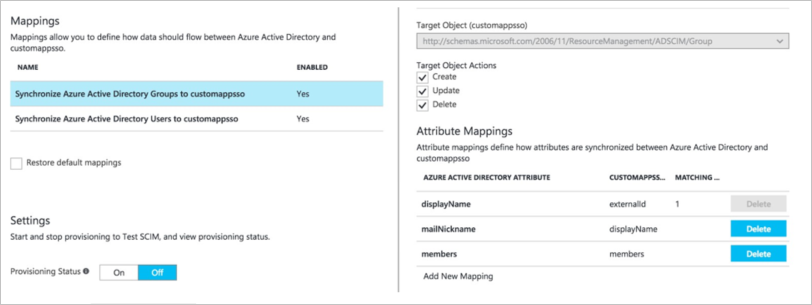Tutorial: Configure LinkedIn Elevate for automatic user provisioning
The objective of this tutorial is to show you the steps you need to perform in LinkedIn Elevate and Microsoft Entra ID to automatically provision and de-provision user accounts from Microsoft Entra ID to LinkedIn Elevate.
Prerequisites
The scenario outlined in this tutorial assumes that you already have the following items:
- A Microsoft Entra tenant
- A LinkedIn Elevate tenant
- An administrator account in LinkedIn Elevate with access to the LinkedIn Account Center
Note
Microsoft Entra ID integrates with LinkedIn Elevate using the SCIM protocol.
Assigning users to LinkedIn Elevate
Microsoft Entra ID uses a concept called "assignments" to determine which users should receive access to selected apps. In the context of automatic user account provisioning, only the users and groups that have been "assigned" to an application in Microsoft Entra ID will be synchronized.
Before configuring and enabling the provisioning service, you will need to decide what users and/or groups in Microsoft Entra ID represent the users who need access to LinkedIn Elevate. Once decided, you can assign these users to LinkedIn Elevate by following the instructions here:
Assign a user or group to an enterprise app
Important tips for assigning users to LinkedIn Elevate
It is recommended that a single Microsoft Entra user be assigned to LinkedIn Elevate to test the provisioning configuration. Additional users and/or groups may be assigned later.
When assigning a user to LinkedIn Elevate, you must select the User role in the assignment dialog. The "Default Access" role does not work for provisioning.
Configuring user provisioning to LinkedIn Elevate
This section guides you through connecting your Microsoft Entra ID to LinkedIn Elevate's SCIM user account provisioning API, and configuring the provisioning service to create, update and disable assigned user accounts in LinkedIn Elevate based on user and group assignment in Microsoft Entra ID.
Tip: You may also choose to enabled SAML-based Single Sign-On for LinkedIn Elevate, following the instructions provided in the Azure portal. Single sign-on can be configured independently of automatic provisioning, though these two features complement each other.
To configure automatic user account provisioning to LinkedIn Elevate in Microsoft Entra ID:
The first step is to retrieve your LinkedIn access token. If you are an Enterprise administrator, you can self-provision an access token. In your account center, go to Settings > Global Settings and open the SCIM Setup panel.
Note
If you are accessing the account center directly rather than through a link, you can reach it using the following steps.
Sign in to Account Center.
Select Admin > Admin Settings .
Click Advanced Integrations on the left sidebar. You are directed to the account center.
Click + Add new SCIM configuration and follow the procedure by filling in each field.
Note
When auto-assign licenses is not enabled, it means that only user data is synced.

Note
When auto-license assignment is enabled, you need to note the application instance and license type. Licenses are assigned on a first come, first serve basis until all the licenses are taken.

Click Generate token. You should see your access token display under the Access token field.
Save your access token to your clipboard or computer before leaving the page.
Sign in to the Microsoft Entra admin center as at least a Cloud Application Administrator.
Browse to Identity > Applications > Enterprise applications.
If you have already configured LinkedIn Elevate for single sign-on, search for your instance of LinkedIn Elevate using the search field. Otherwise, select Add and search for LinkedIn Elevate in the application gallery. Select LinkedIn Elevate from the search results, and add it to your list of applications.
Select your instance of LinkedIn Elevate, then select the Provisioning tab.
Set the Provisioning Mode to Automatic.

Fill in the following fields under Admin Credentials :
In the Tenant URL field, enter
https://api.linkedin.com.In the Secret Token field, enter the access token you generated in step 1 and click Test Connection .
You should see a success notification on the upper-right side of your portal.
Enter the email address of a person or group who should receive provisioning error notifications in the Notification Email field, and check the checkbox below.
Click Save.
In the Attribute Mappings section, review the user and group attributes that will be synchronized from Microsoft Entra ID to LinkedIn Elevate. Note that the attributes selected as Matching properties will be used to match the user accounts and groups in LinkedIn Elevate for update operations. Select the Save button to commit any changes.

To enable the Microsoft Entra provisioning service for LinkedIn Elevate, change the Provisioning Status to On in the Settings section
Click Save.
This will start the initial synchronization of any users and/or groups assigned to LinkedIn Elevate in the Users and Groups section. Note that the initial sync will take longer to perform than subsequent syncs, which occur approximately every 40 minutes as long as the service is running. You can use the Synchronization Details section to monitor progress and follow links to provisioning activity logs, which describe all actions performed by the provisioning service on your LinkedIn Elevate app.
For more information on how to read the Microsoft Entra provisioning logs, see Reporting on automatic user account provisioning.
Additional Resources
Feedback
Coming soon: Throughout 2024 we will be phasing out GitHub Issues as the feedback mechanism for content and replacing it with a new feedback system. For more information see: https://aka.ms/ContentUserFeedback.
Submit and view feedback for